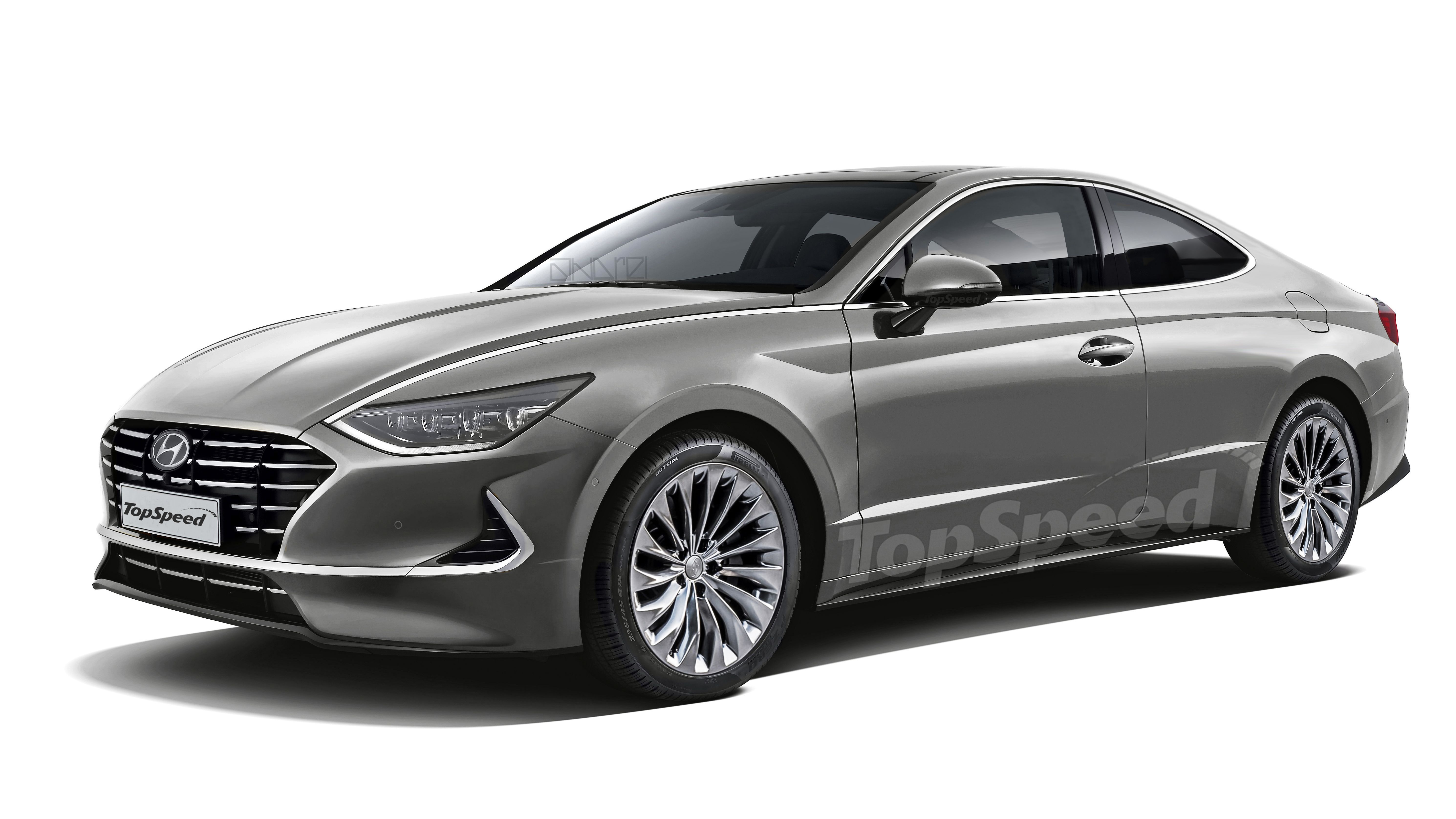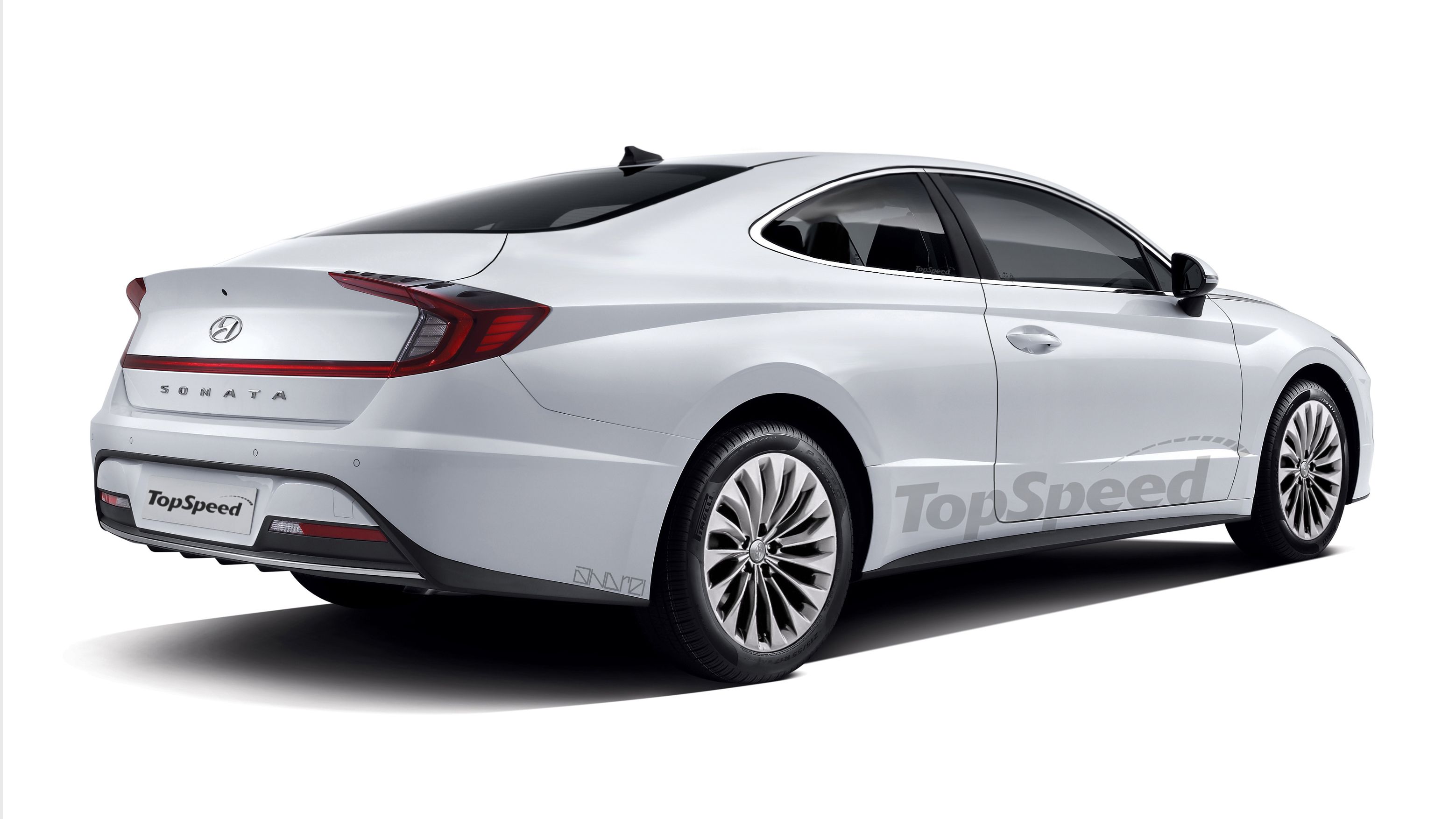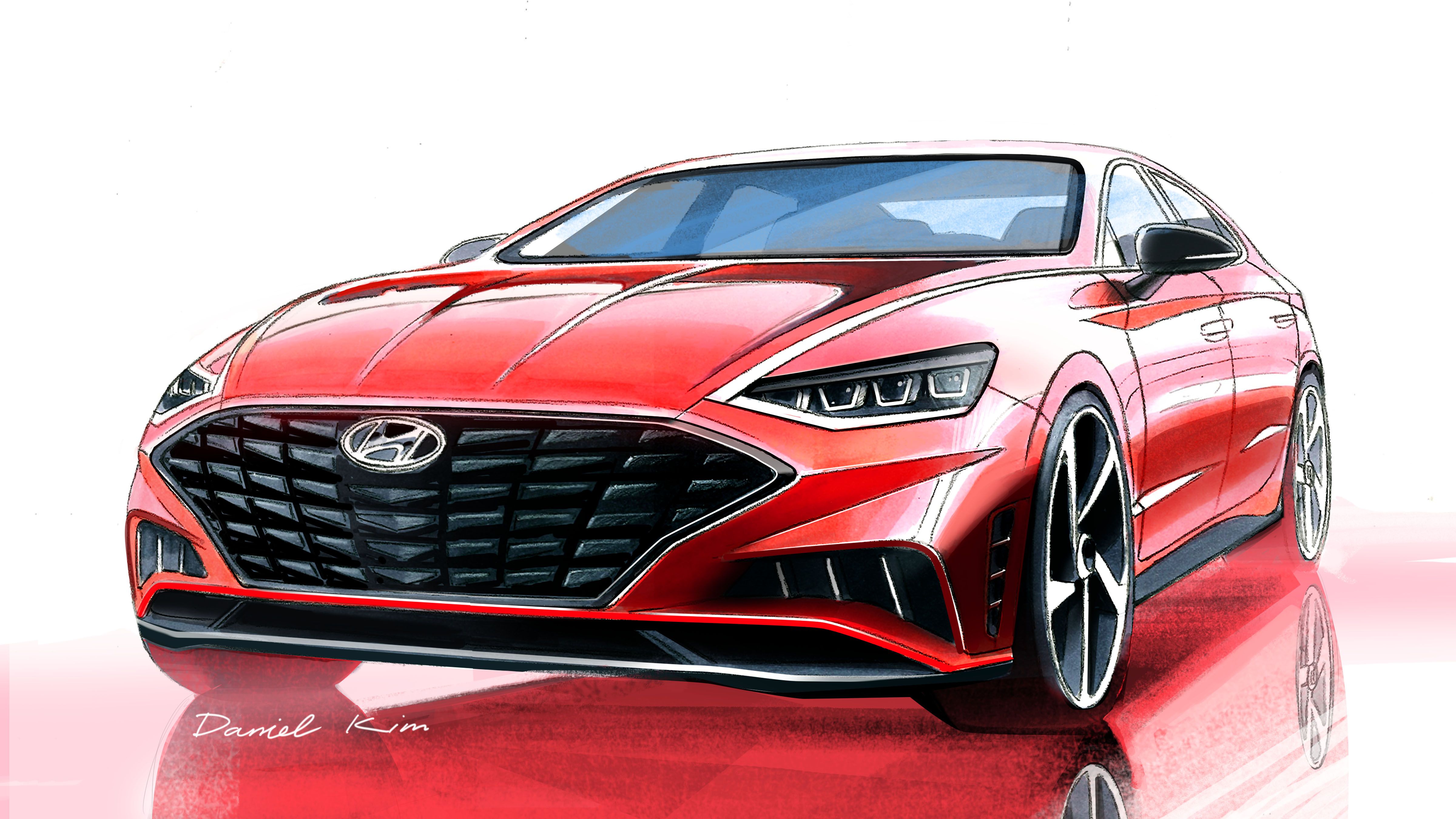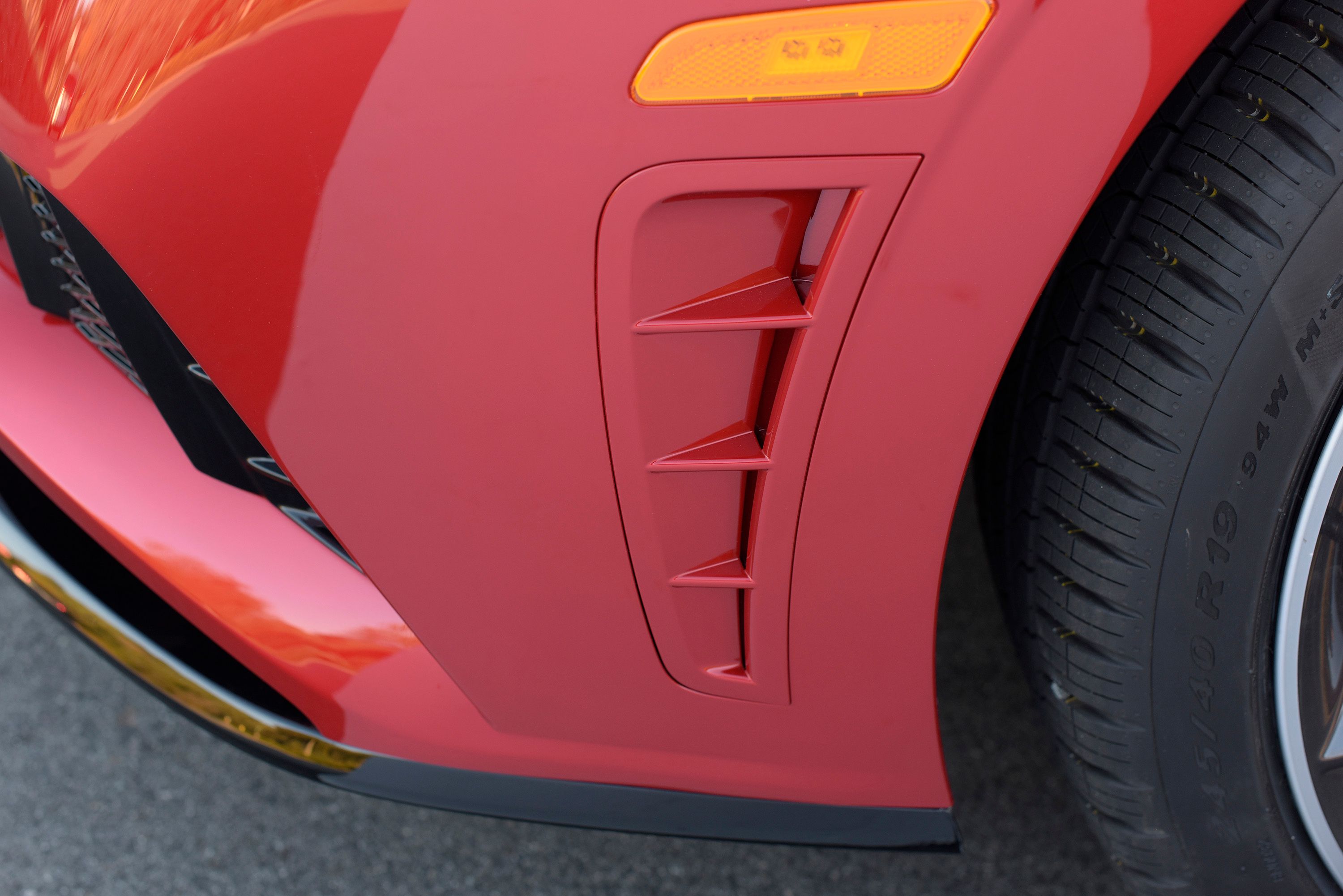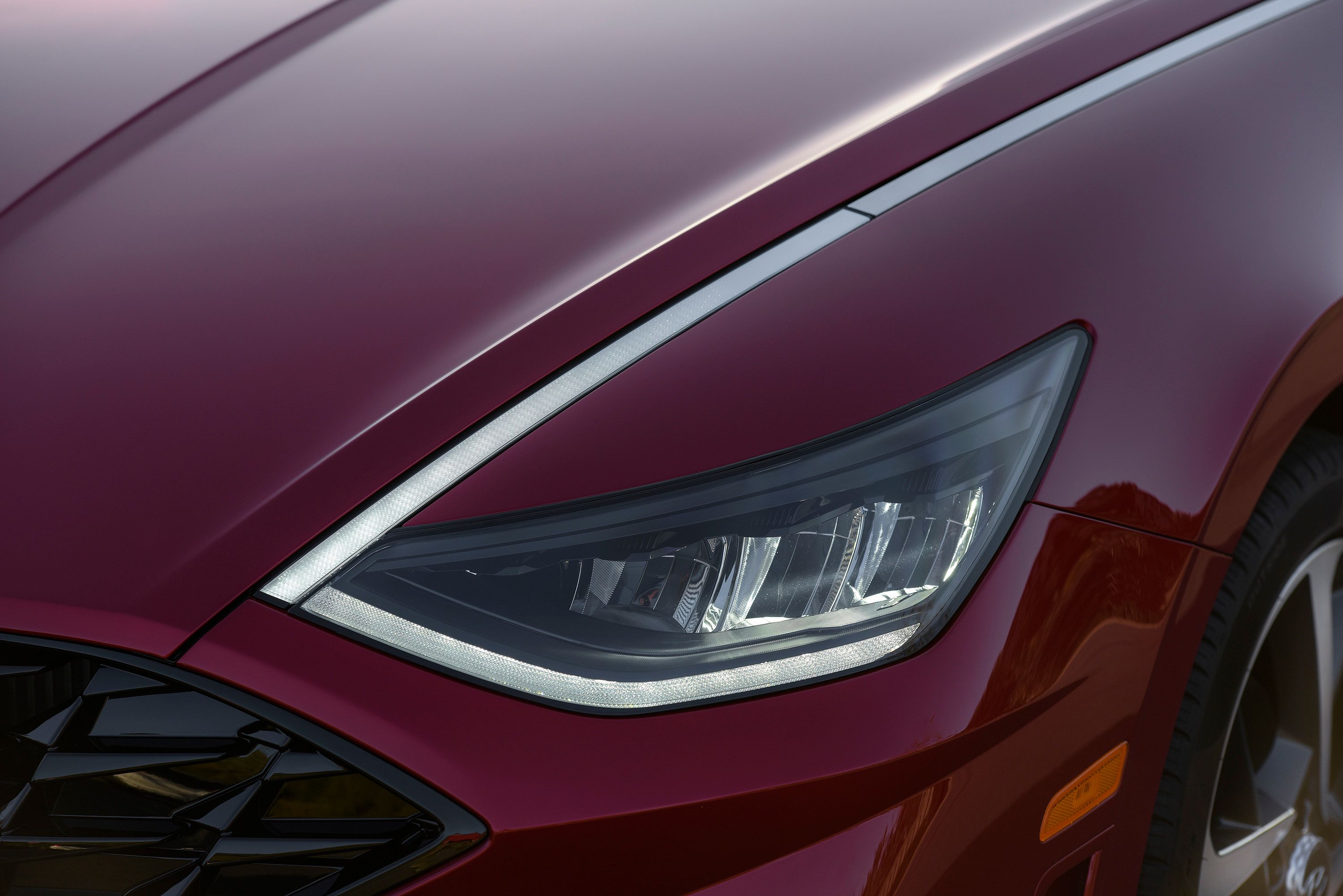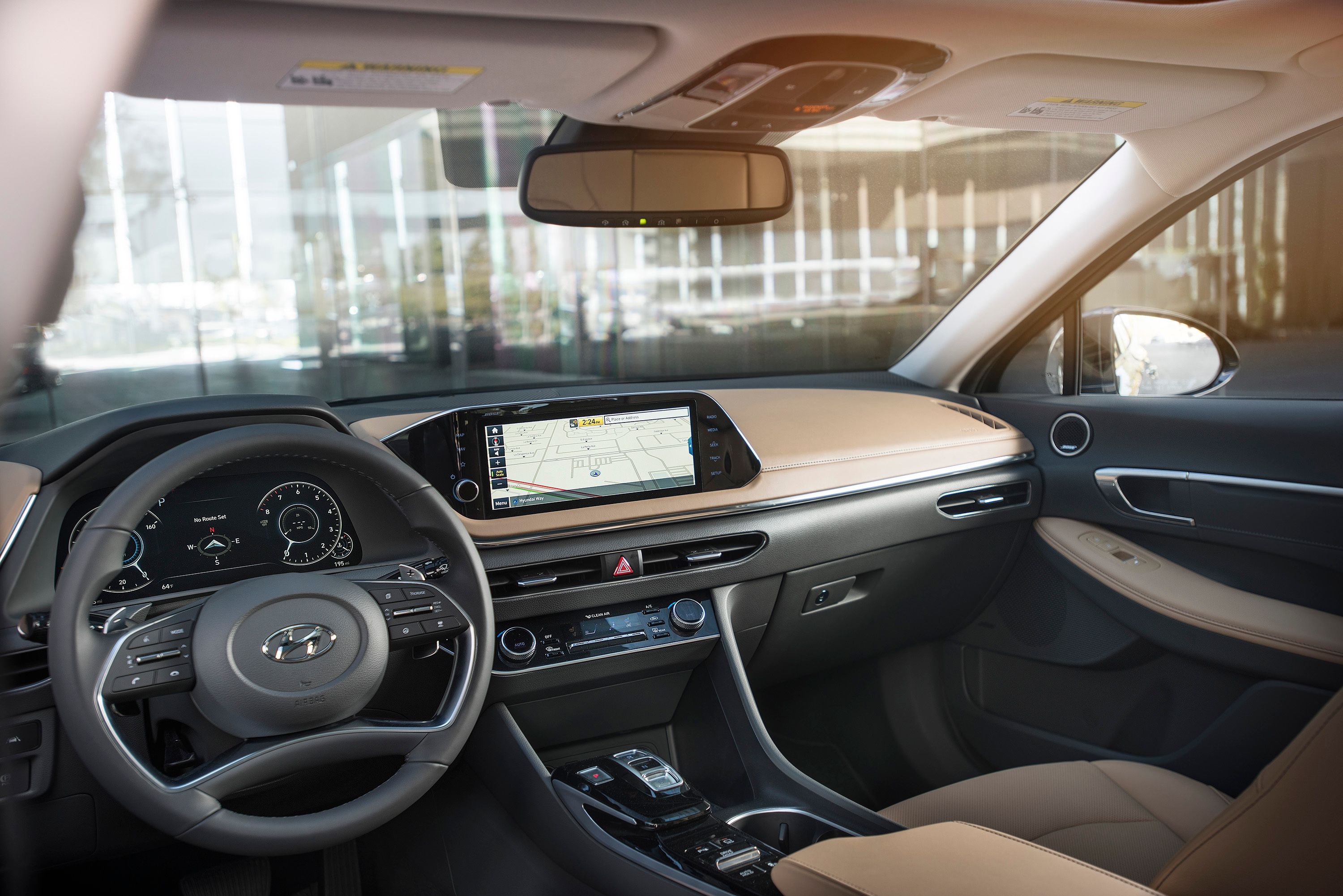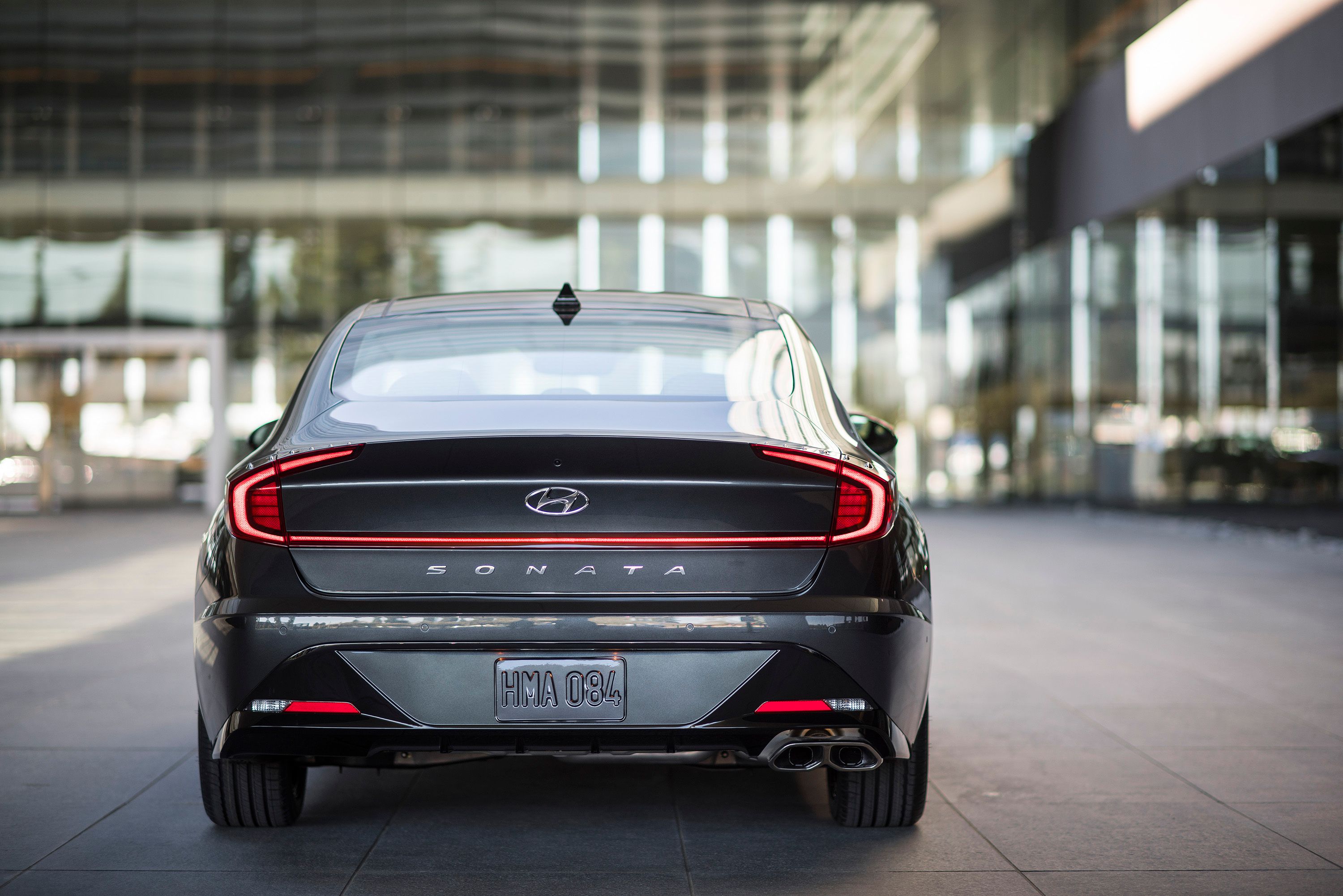For me, one of the big revelations of the 2019 New York Auto Show was the 2020 Hyundai Sonata coupe-like sedan, which we finally got to see in detail. I love everything about the design, including the crazy daytime running lights that go halfway up the hood, the car’s sleek side profile, and the tapered back too, but there’s one thought that keeps nagging me when I look at this new three-box Hyundai - this would make such a good coupe, with only small alterations to the formula (and the removal of the two rear doors, obviously).
Making A Sonata Coupe
But I really didn’t change anything major and my intent was to make this version of the Sonata look like it came from the factory, and I think my attempt is a believable one.
I left the front and rear fascias untouched, not because I didn’t have any ideas on how to modify them, but because I like both very much and I think they suit the look of the car. One additional change I did was to give this Sonata Coupe the wheels from a Genesis G90, since if it was a real model, it probably would be more expensive than the regular sedan and you’d also not be able to buy it in its lowest spec versions.
The lower roof results in less weight up top, a better center of gravity, and better aerodynamics too. If these changes were coupled to stiffer suspension and maybe a quicker steering rack, then it all could have a noticeable impact on the driving experience.
2020 Hyundai Sonata exterior dimensions
|
Wheelbase |
111.8 |
|---|---|
|
Length |
192.9 |
|
Width |
73.2 |
|
Height |
56.9 |
This hypothetical Sonata Coupe would be much more of a cruiser than a corner carver, albeit a swift, grippy and precise cruiser with high comfort levels. The performance offered by its 1.6-liter engine with 180 horsepower only makes the car brisk, rather than fast, and therefore its focus on comfort makes much more sense. If Hyundai adds the 2.0-liter turbocharged engine to the Sonata lineup, then maybe a performance model would work, but not with the 1.6-liter.
2020 Hyundai Sonata drivetrain specifications
|
ype |
GDI DOHC 16-valve Inline 4-cylinder |
Turbo-GDI DOHC 16-valve Inline 4-cylinder |
|---|---|---|
|
Materials |
Aluminum block and head |
Aluminum block and head |
|
Bore & stroke (mm) |
88.5 x 101.5 |
75.6 X 89 |
|
Compression ratio |
13.0 : 1 |
10.5 : 1 |
|
Displacement |
2.5 liters / 2,497 |
1.6 liters / 1,598 cc |
|
Horsepower |
191 @ 6100 rpm (est.) |
180 @ 5500 rpm (est.) |
|
Torque (lb-ft.) |
181 @ 4000 rpm(est.) |
195 @ 1500-4500 rpm (est.) |
|
Transmission |
8-speed Automatic |
8-speed Automatic |
The crossover is cannibalizing all automotive market segments and the pretty-yet-affordable coupe only appeals to a select category of buyers, so it’s even more of a niche body style than it was in the past. That’s a shame, because I’m not the only one to say a sleek two-door is the best way to do a grand tourer, especially in a car like this that should still be able to carry two adults in the back - rear headroom definitely wouldn’t be its strong point, but this Sonata Coupe has the same wheelbase as the sedan, so legroom shouldn’t be an issue.
2020 Hyundai Sonata interior dimensions
|
Head room (front (w/sunroof)/ 2nd row (w/sunroof) |
40.0 (38.4) / 37.8 (37.4) |
|---|---|
|
Leg room (front / 2nd row) |
46.1 /34.8 |
|
Shoulder room (front / 2nd row) |
57.9 / 56.1 |
|
Hip room (front / 2nd row) |
54.6 / 54.4 |
|
Cargo, trunk |
16.0 |
Hyundai won’t make anything of this sort, though, because there isn’t a business case for it. If you look at the South Korean automaker’s lineup, you’ll see its dominated by SUVs, crossovers and all manner of high-riding silhouettes with quirky faces. In fact, aside from the Veloster which is only a coupe if you view it from its left side, Hyundai doesn’t sell any two-door models in the U.S. anymore, and in fact, they’ve generally grown quite rare on the new car market.
Further Reading
The All-New 2020 Hyundai Sonata Has a Striking Face and Upmarket Interior
Read our full review on the 2018 Hyundai Sonata.

